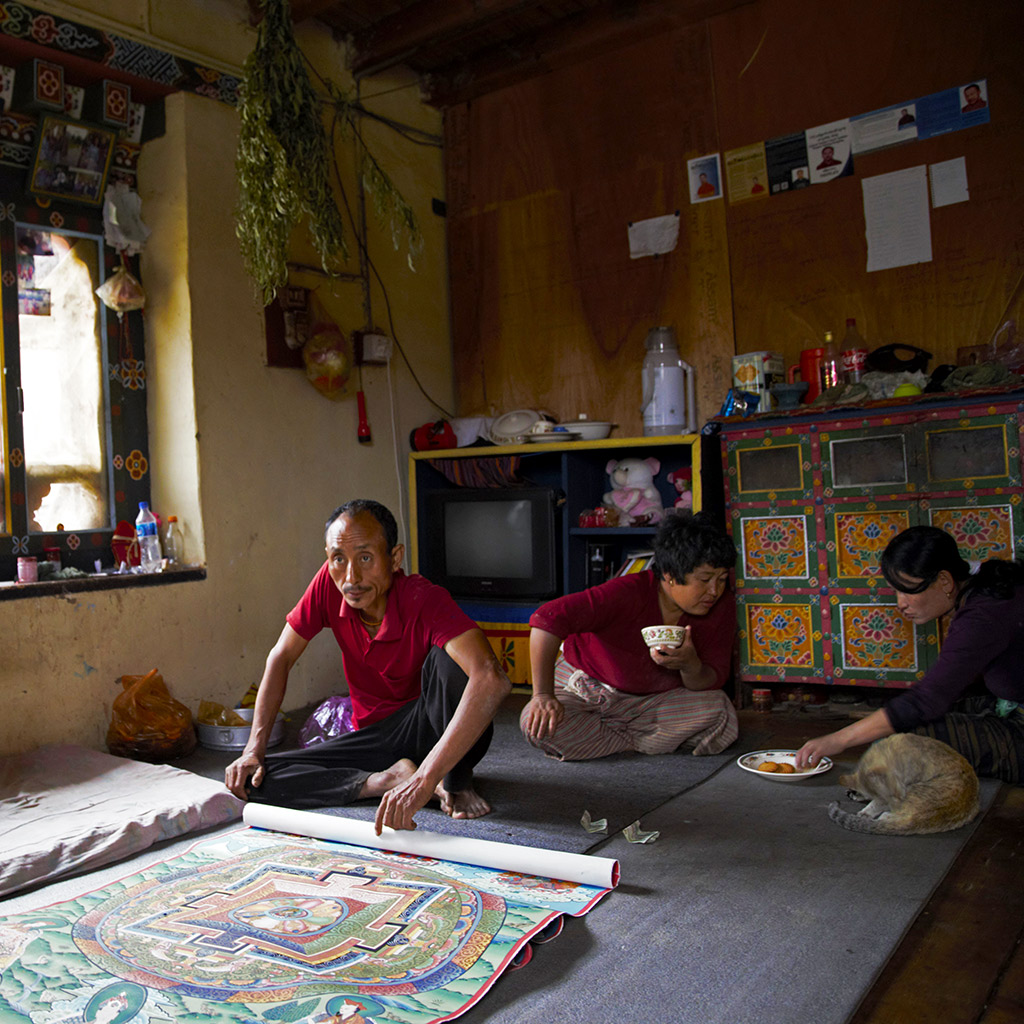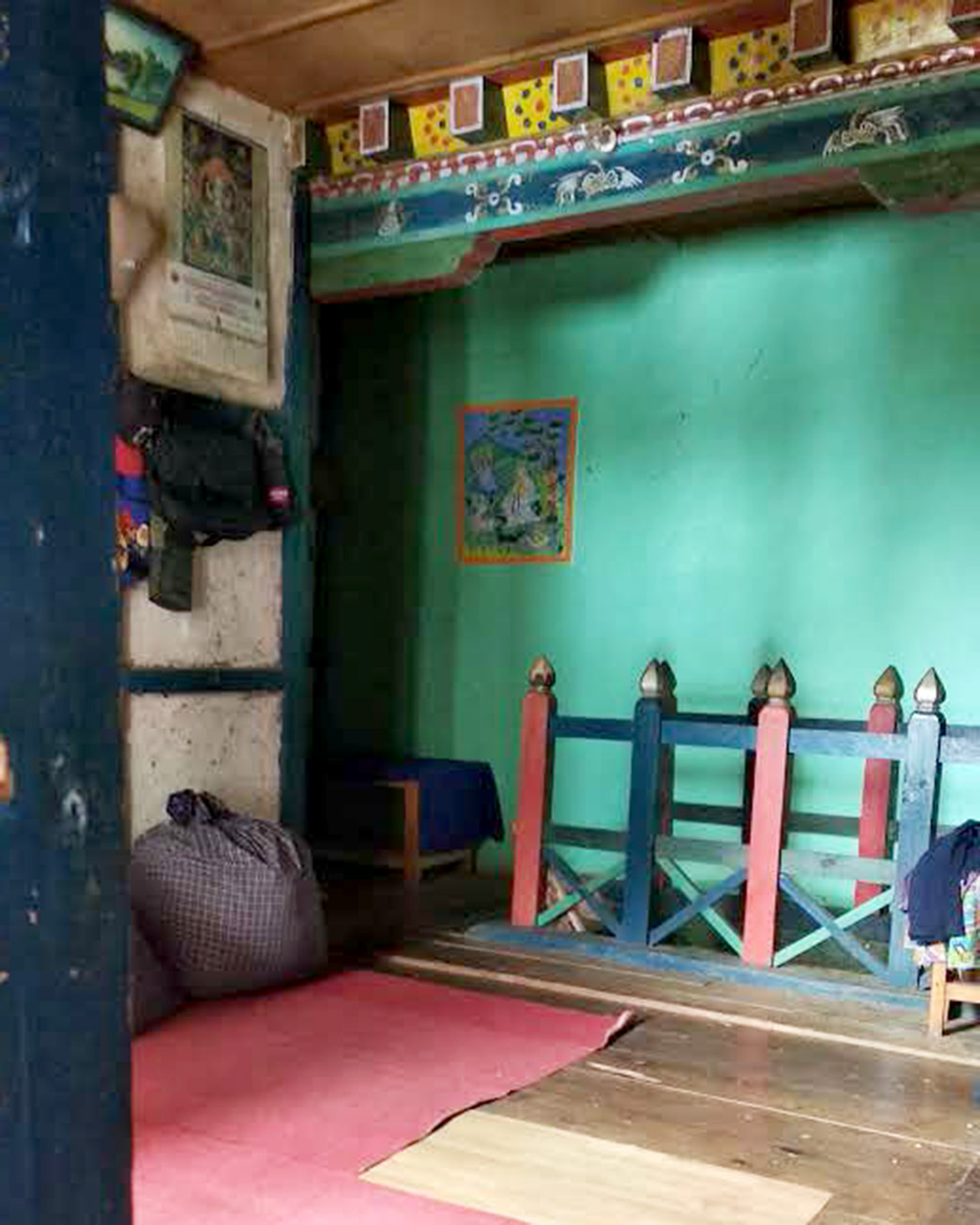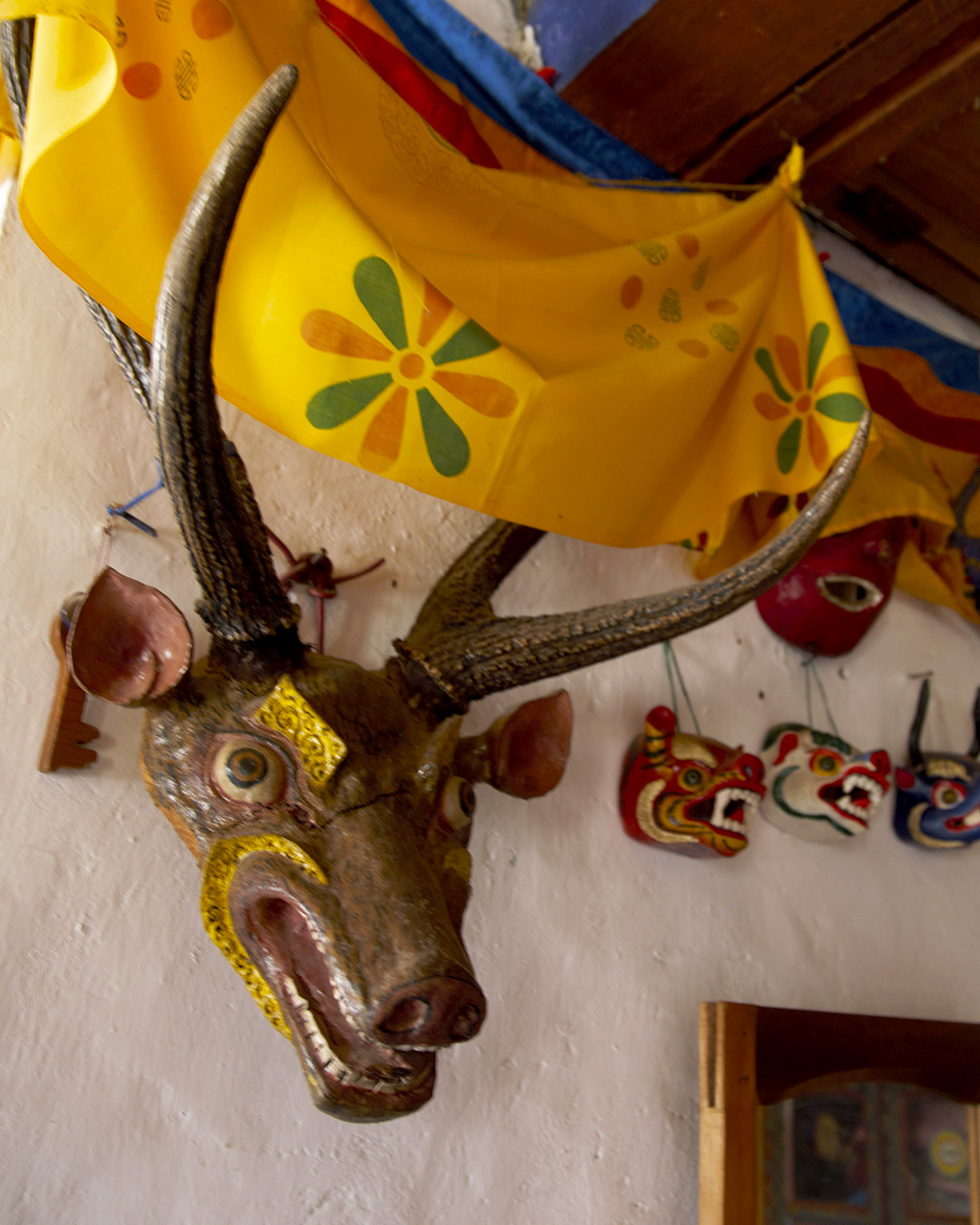Craft in the Home

In Bhutan, the carpenter is the master craftsman of the house, which he designs in consultation with the expert in geomancy. The master works with a team of carpenters, resolving the plan, structure and aesthetics of the house. Each member of the team specialises in carving and making different elements that go into the house – the doors, the altar, the pillars, the corbels, the panels.
Zo Napa, married to one of Gyelmo’s aunts, is one such master craftsman in the village. They now live in Gyelmo’s grandmother’s home, and a small carpentry workshop has been built beside the old kitchen. The scent of wood welcomes the visitor, and elaborately carved altars, low decorated stools and a small bookshelf jostle for attention. Zo sits on a platform, sharpening his tools as he chats with a coworker who shares the space with him. Most of the furniture is made to order by individuals or from the monastery and dzongDzongs are the fortress-monasteries of Bhutan and Tibet. The presence of Dzongs across the country symbolizes unification and the recognition of a central authority by the people in the region. Read More. With the reconstruction of the Wangdue dzongDzongs are the fortress-monasteries of Bhutan and Tibet. The presence of Dzongs across the country symbolizes unification and the recognition of a central authority by the people in the region. Read More underway, much of the work is up at the dzongDzongs are the fortress-monasteries of Bhutan and Tibet. The presence of Dzongs across the country symbolizes unification and the recognition of a central authority by the people in the region. Read More itself, and the workshop is shut in those instances.

Next door lives Lharip Singay, a painter, married to another of Gyelmo’s aunts. He was trained as an artist in the classical form, and the walls of his home and altar are exquisitely painted with colours and symbols of Tibetan Buddhism. Having been a monk in his earlier days, he is well versed in the art of Thangka painting and the creation of exquisite Mandalas with powdered colour – the art of which is a prayer and meditation, the purview of the monks. He left his monkhood behind after marriage, and now works out of his home, which transforms into a studio of sorts when he has many orders.

Changes in circumstances have affected many of the traditional arts that once characterised village life across the country. Not many homes are built, or rebuilt, in the village as often and the demand for these craftsmen has gone down. They have needed to adapt and reinvent their skills to suit the new requirements. Tourism and apartment living have different demands that have pushed them to work with newer materials. In Zo’s workshop, full of artisans trained to work with timber and traditional form, one can see attempts at working with plywood and contemporary designs. While not traditional at all, they are becoming the new normal which any skilled worker needs to keep pace with. Similarly, most artists have moved from natural pigments and paints to acrylic colors and paper. Fine detailing of the prescribed forms, symbols and colour – there is very little deviation from the traditional, the art becoming more ritualistic.

The symbolism and beauty of craft in the home together form an integral part of traditional construction. Gyelmo tells us that the white flags atop each house represent the connection with the almighty, and are an essential feature in every house, as are the auspicious signs from Tibetan Buddhism painted and embellished on the walls of the homes. The wooden windows and the cornice at the top are painted with natural pigments that preserve the wood, and are beautiful ornaments on the house. Every Bhutanese home uses colour and symbols through the woodwork and painting in the form, to pay obeisance to the gods and express allegiance to the identity. The built form becomes a platform for communication and expression through art and craft. While the elements used follow a script, there are creative departures which are more individualistic. With rapid change, the memories of this intangible connection are beginning to disappear – and along with them the connection to nature and the environment which these symbols represent.
Vignettes







